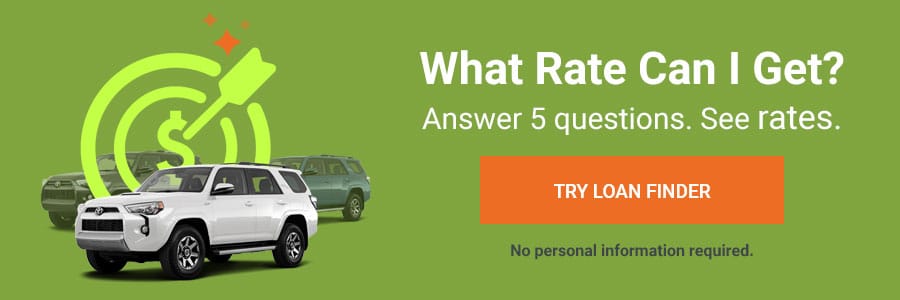It’s a risky approach, but if you do it right, it can work spectacularly.
What if I told you that you could get an interest-free car loan, at least for a little while? If that sounds too good to be true, it’s not — sort of.
There’s a reason why you don’t see more people doing this, and it’s because your circumstances need to line up just right. You’ll need to do a lot of preparation, and you’ll need a lot of discipline to follow through and avoid negative consequences. But done correctly, it can help you save a ton of money and get out of debt even faster.
We’ll walk you through the pros and cons of this strategy. We’ll also help you decide whether it’s worth it for you, and give you a step-by-step plan for how to do it the right way.
Why Transfer Your Auto Loan to a Credit Card?
Normally, there’d be no reason to transfer your auto loan to a credit card. The high interest rates make the payments more challenging. But every once in a blue moon, it might make sense, especially when you can qualify for a credit card that offers a 0% APR introductory offer on balance transfers.
These 0% APR offers are usually geared toward people looking to pay off credit card debt, but you can often transfer other types of debt too, such as student loans, mortgages, and yes — auto loans. It’s not entirely a get-out-of-jail-free card, however, because the 0% APR is only limited to a certain period of time.
Typically, balance transfer credit cards offer around 15 months at 0% APR. But some cards, such as the Wells Fargo Reflect Card, offer up to 21 months’ worth of an interest-free runway.
To qualify, you usually need to complete the balance transfer within the first two to three months, although the runway starts counting down from the day you open the card. When it runs out, the normal interest rate kicks in, and any remaining balance will be assessed interest at this new rate, which is usually much higher than your initial auto loan.
That’s why this strategy can save you a lot of money, but it’s rather limited in who can use it.
Should I Transfer My Auto Loan to a 0% APR Credit Card?
Doing a successful balance transfer to pay off your auto loan sooner requires a lot of things to line up successfully. Ask yourself these questions:
- Is my income and credit high enough that I could get approved for a line of credit large enough to cover the remainder of my car loan?
- Can I pay off the rest of my auto loan in full before the 0% APR runway ends?
- Do I have the discipline to make those extra payments, rather than setting it on the back burner because it’s not being charged much interest?
- Will I save enough in interest charges to outweigh the cost of any extra fees?
- Can I avoid applying for any other credit within the next year or two, in case my credit score temporarily drops?
If you answered “yes” to all of these questions, it could be a good strategy for you. If not, then you might want to consider another alternative, which we’ll discuss below.
Pros and Cons of Transferring Auto Loan Debt to a 0% APR Credit Card
This is a trickier strategy than many other ways to save on your auto loan. You’ll need to weigh these pros and cons when deciding if it works for you.
Pros
The pros of transferring auto loan debt to a 0% APR credit card:
- Clear your car title faster: An auto loan is a secured debt, and a credit card is not. After you pay off the secured debt, your old lender should release the car’s title to you.
- Can help you save money on interest: Often — but not always — you’ll save a lot more in interest than you’ll have to pay in fees, such as balance transfer fees, prepayment penalties, or cash advance fees.
- Can help you save money on insurance: Lenders usually require you to have collision and comprehensive insurance. If you don’t want to pay for that, you can cancel these policies after you do the transfer, but be mindful of the downsides.
- Can help you pay off debt faster: If you apply those extra savings to your 0% APR credit card, you’ll be free and clear of that debt even faster.
That all sounds pretty good, but what about the cons?
Cons
The cons of transferring auto loan debt to a 0% APR credit card:
- Could come with extra fees: Depending on your credit card, you might have to pay a balance transfer fee or a cash advance fee. Your old loan might also charge a penalty fee if you pay it off early.
- Strict time limits: The clock on the 0% APR introductory offer starts counting from the day you’re approved for the card. You’ll also typically need to get the transfer done within the first two or three months, or the offer might no longer be available.
- Won’t earn rewards: “Some consumers falsely assume they can earn rewards points by transferring their car loan balance to a credit card,” says Todd Christensen from the nonprofit Debt Reduction Services, Inc. “Rewards credit cards do not offer points or other cash-back rewards for transferring balances to their accounts.”
- Big credit score impact: Transferring your debt from an installment loan to a revolving line of credit can increase your credit utilization ratio, decrease your average account age, add a new hard inquiry to your credit report, and decrease the different types of accounts you have — all of which can lower your credit score. Taken together, you might see a big decrease in your credit score, at least until you can pay off the debt.
- Might not be able to transfer your entire loan: You generally don’t get to choose your credit limit. Credit card issuers base this on things like your credit score and income, and there’s no way to know in advance what your credit limit will be. If it’s not enough, you might not be able to transfer over your entire loan.
- Requires a lot of planning and discipline: This isn’t a financial strategy for newbies, unfortunately. It’ll take a lot of planning to see if it’s worth it. It’ll take a lot of discipline to continue making extra payments while your debt isn’t racking up any interest.
It’s starting to sound more complicated now, isn’t it?
Alternatives to Transferring Your Auto Loan to a 0% Intro APR Credit Card
If you want to get rid of your auto loan faster, transferring your debt to a credit card isn’t your only option. Here are two other great choices that almost anyone can make:
Budget and pay extra toward your auto loan each month
The minimum car payment on your auto loan isn’t your only choice, and you don’t have to be in debt for as long as your repayment schedule says. Most auto loans allow you to make as many extra loan payments as you want without any ill effect, but to be sure, call your lender or check your contract to see if there are any prepayment penalties.
Paying extra on your auto loan is easier said than done. But you can usually find extra money by putting together a working budget and finding side hustles to earn extra cash to make progress toward your goal even faster. By lowering your expenses and earning more money, most people are able to make much faster progress in paying off their loans without any fancy financial maneuvers.
Refinancing your auto loan
Rather than replacing your auto loan with credit card debt, you can also consider replacing your current auto loan with a new auto loan. This can serve a couple of different purposes.
If you’re able to refinance for a lower interest rate, you can save money in the long run. That’s especially true if you refinance for the same amount of time you have left in your current loan, or for an even shorter term length.
If you refinance for a longer term length, you can lower your monthly payments. This can help if you’re having trouble affording them, but it does usually increase the amount of interest you pay in the long run. To compare your options, try using an auto loan refinance calculator.


A Step-by-Step Guide to Transferring Your Auto Loan to a 0% APR Balance Transfer Card
This debt payoff strategy is a bit more squirrely than most, so it’s a good idea to go about it the right way. Here’s a good strategy to use to figure out if it’s worth it for you, and if so, how to dodge the pitfalls and get the best results possible.
1. Consider your credit needs
Since this strategy has the potential to negatively affect most of the main factors that make up your credit score, at least until the debt is paid off, it’s a good idea to hold off if you’ll need to apply for more credit in the next year or two. It’d be a big bummer if you had to pass on your dream house because your credit score wasn’t where it needed to be, for example.
2. Find the right balance transfer card and verify all of the details
There are many 0% APR balance transfer cards out there, some of which are better than others. Many of them place limits on balance transfers. For example, Chase Bank won’t let you transfer more than $15,000′ worth of debt in a single month, and most credit card issuers won’t let you transfer an auto loan onto a credit card from within the same financial institution.
Pay close attention to the Terms & Conditions of a credit card and if you can’t find these answers, don’t hesitate to reach out to a customer service representative:
- Are balance transfers from an auto loan allowed?
- Are there limits on the transfer amount?
- How is it done — can I do a direct transfer, or do I have to get a cash advance?
- Do I still qualify for the 0% APR offer if I do a cash advance?
- What fees are involved?
- Does the 0% APR promotional period automatically end if I miss a payment?
Once you answer these questions, you’ll have a better idea of which card is the right one.
3. Calculate any fees
“Most credit cards levy a fee to transfer a balance, typically 3% to 5% of the transferred amount,” says Levon Galstyan, a certified public accountant with Oak View Law Group. “This might exceed the amount you would save on interest.”
If the transfer takes place via a cash advance, there might be extra cash advance fees, and it could be assessed a higher interest rate once the 0% APR introductory period ends. Some credit cards also charge an annual fee.
Tally up the fees you’d have to pay because this would be your cost of doing the transfer.
4. Weigh the cost against potential savings
Use an auto loan calculator to see how much you would end up spending on interest charges if you continued to pay off the loan as scheduled. This gives you a baseline to compare against and make good financial decisions. For example, if it’d cost you $500 in fees but you’d save $1,000 in interest costs, then it would definitely be worth your while to move forward with the balance transfer.
5. Figure out your new monthly payment
“You’ll probably wind up paying much more in credit card interest than you would have if you had kept the original auto loan if you continue to carry the majority of your auto debt on your card after the 0% term has passed,” says Galstyan.
For that reason, it’s strongly recommended to avoid this strategy unless you’re able to pay off the remainder of the loan before the 0% APR offer ends. The longer the balance transfer offer you can find, the more runway you have to do this. This is one of the biggest limiting factors for this strategy. If you transfer over a $15,000 loan and have 12 months to pay it off, for example, you’d need to pay $1,250 each month.
6. Consider your other options
Now that you have the full picture of what it would take to pull off this balance transfer strategy successfully, you can go back and compare it to your other options listed above. See whether it makes more sense to keep your current loan and pay extra, or refinance your current loan for a new auto loan.
7. Apply for the new credit card and do the balance transfer ASAP
If the balance transfer strategy is the winner, go ahead and apply for your chosen card. If you’re approved, try to complete the balance transfer as quickly as possible to maximize your savings.
These balance transfers can sometimes take a little while to complete. In the meantime, continue your payments on your old loan until you see a $0 balance. The last thing you want is a missed payment at this point.
8. Set up autopay
Finally, set up an automatic payment each month for the payment amount you calculated in Step 5. This will ensure that you’re able to pay it off according to schedule. If you try to remember the credit card payments on your own or sign up for just the minimum payment, you might forget to make the extra payment or decide you can make it up later, which makes it harder to get ahead.
Proceed With Caution
Transferring your auto loan to a 0% APR balance transfer card can be a powerful personal finance hack, but like most personal finance hacks, it’s more of an intermediate or advanced strategy. Do it right and it could be a big boon to your finances. But do it wrong — and there are a lot of ways to stumble — and it could cost you far more than if you let things be.
If you’re honest with yourself and your abilities, you should be able to find a strategy that works for you no matter your financial situation.
About The Author
RateGenius
A better way to refinance your auto loan. RateGenius works with 150+ lenders nationwide to help you save money on your car payments. Since 1999, we've helped customers find the most competitive interest rate to refinance their loans on cars, trucks, and SUVs. www.rategenius.com
;)



